Butler County Historical Marker
Butler County Historic Marker Unveiling Ceremony
Miami University photographers Jeff Sabo and Scott Kissell captured the unveiling ceremony of a historical marker at the Dr. Martin Luther King, Jr. Park in uptown Oxford on June 21.
Read about the meaning of the marker and the Truth and Reconciliation Project led by Miami’s Anthony James, interim vice president for diversity and inclusion, and Valerie Carmichael, director of graduate admission, in the June 16 news story “Historic marker fosters healing from past racially motivated injustices.”
The marker describes the deaths of Henry Corbin (Jan. 14, 1892) and Simeon Garnet (Sept. 3, 1877), who were among more than 4,000 African Americans subjected to mob violence and lynching across the United States during the reconstruction period after the Civil War (1865-1950). Corbin and Garnet, both of Butler County, specifically Oxford, were among 15 people known to have died by racial terror lynching in Ohio.
Ceremony speakers included Carmichael and James; family members of Corbin and Garnet; Miami University President Gregory Crawford; City of Oxford Mayor Mike Smith; and Gabrielle Daniels from the Equal Justice Initiative, among others.
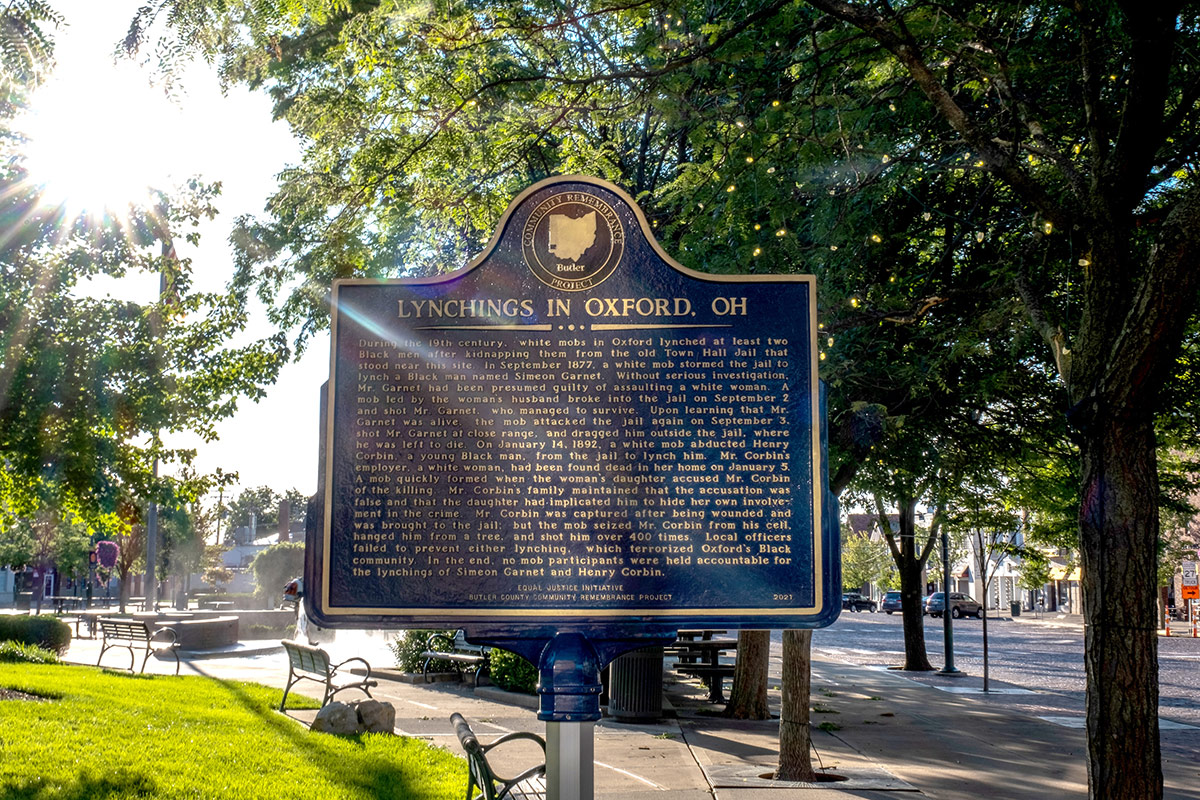
A closeup of the historical marker.
Lynchings in Oxford
During the 19th century, white mobs in Oxford lynched at least two Black men after kidnapping them from the old Town Hall Jail that stood near this site. In September 1877, a white mob stormed the jail to lynch a Black man named Simeon Garnet. Without serious investigation, Mr. Garnet had been presumed guilty of assaulting a white woman. A mob led by the woman’s husband broke into the jail on September 2 and shot Mr. Garnet, who managed to survive. Upon learning that Mr. Garnet was alive, the mob attacked the jail again on September 3, shot Mr. Garnet at close range, and dragged him outside the jail, where he was left to die. On January 14, 1892, a white mob abducted Henry Corbin, a young Black man, from the jail to lynch him. Mr. Corbin’s employer, a white woman, had been found dead in her home on January 5. A mob quickly formed when the woman’s daughter accused Mr. Corbin of the killing. Mr. Corbin’s family maintained that the accusation was false and that the daughter had implicated him to hide her own involvement in the crime. Mr. Corbin was captured after being wounded and was brought to the jail; but the mob seized Mr. Corbin from his cell, hanged him from a tree, and shot him over 400 times. Local officers failed to prevent either lynching, which terrorized Oxford’s Black community. In the end, no mob participants were held accountable for the lynchings of Simeon Garnet and Henry Corbin. --- From Miami’s Truth and Reconciliation Project.
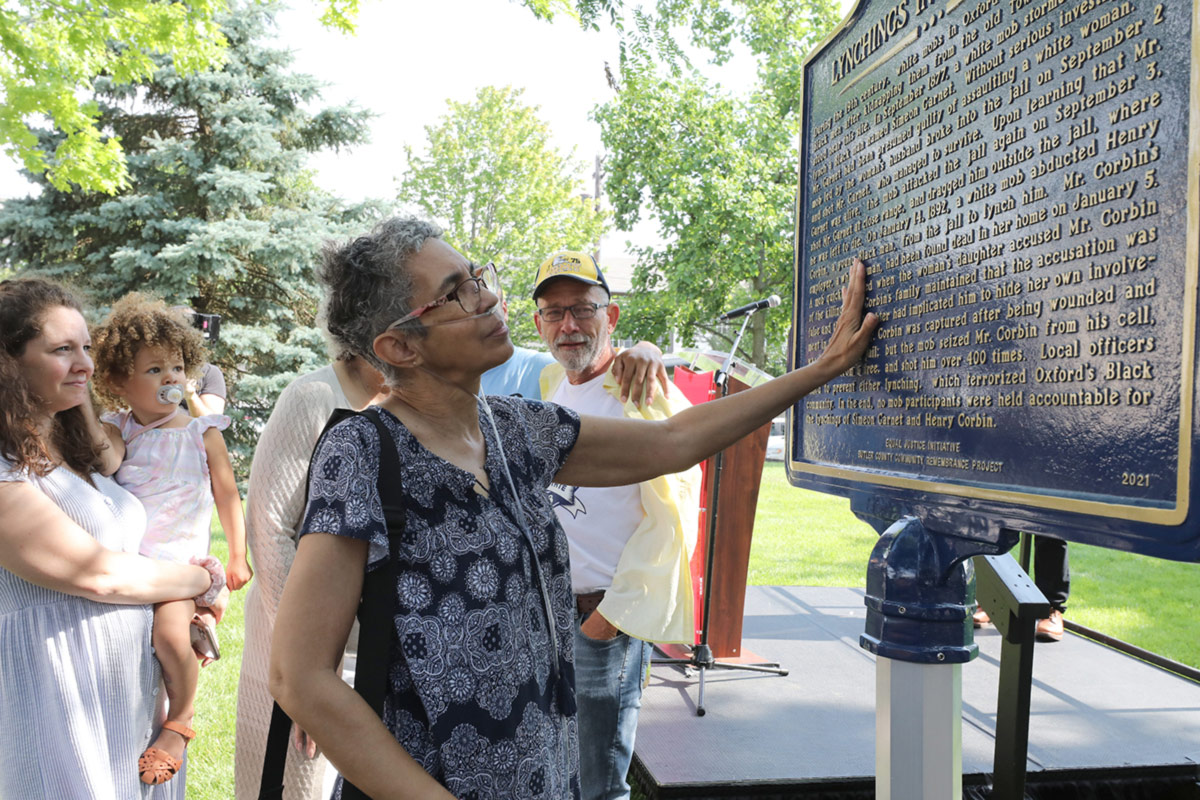
Family members of Mrs. Chris Corbin-Jerreals (two men, three women and one child) look at and touch the historical marker.
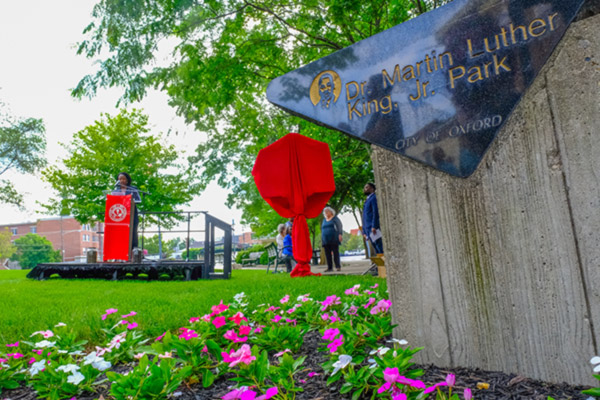
A view of the Martin Luther King Jr. Park sign with the historical marker in the background covered in a red drape, and Fran Jackson, president of the Oxford branch, NAACP, at a podium.
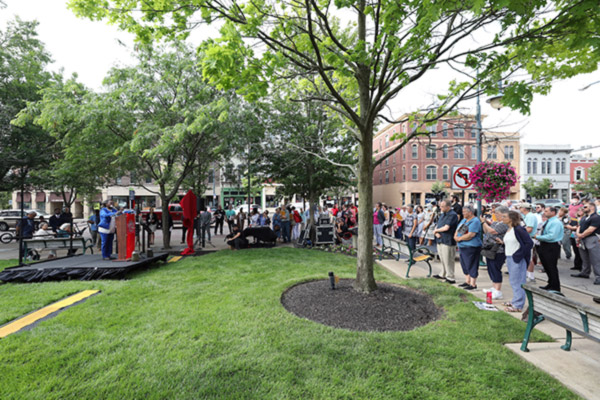
A wide view of the crowd at the ceremony and Fran Jackson at the podium.
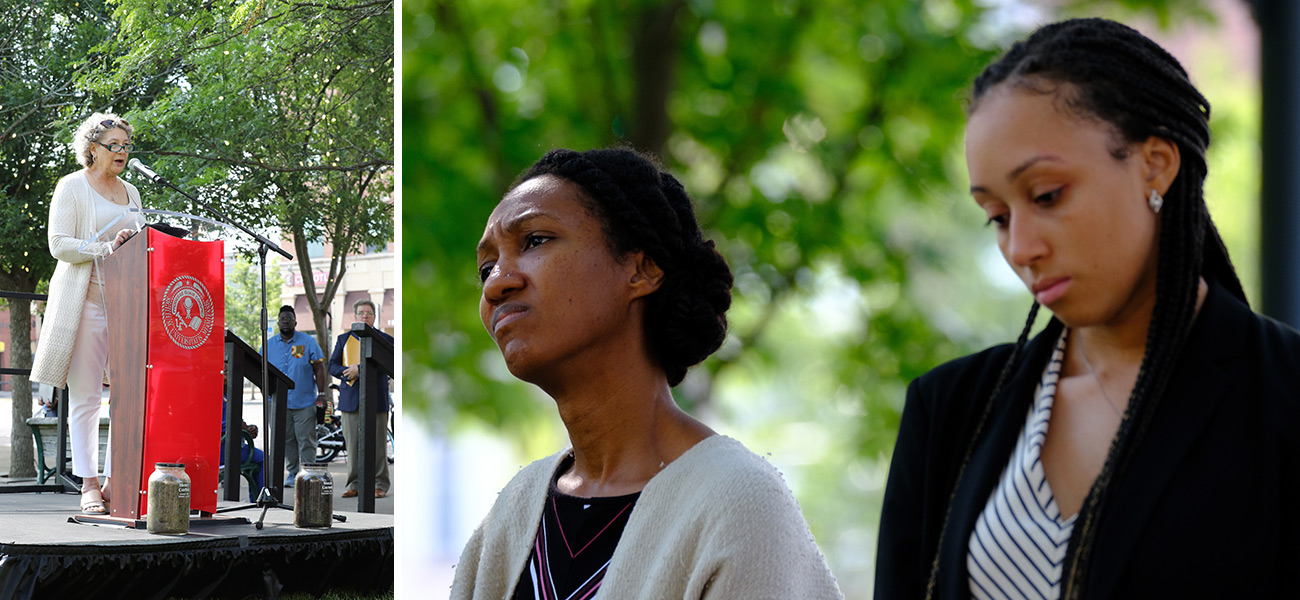
Left: Mrs. Chris Corbon-Jerreals speaks to the crowd from the podium. Center: Gabrielle Daniels (left) from the Equal Justice Initiative and a member of the audience listen to a speaker.
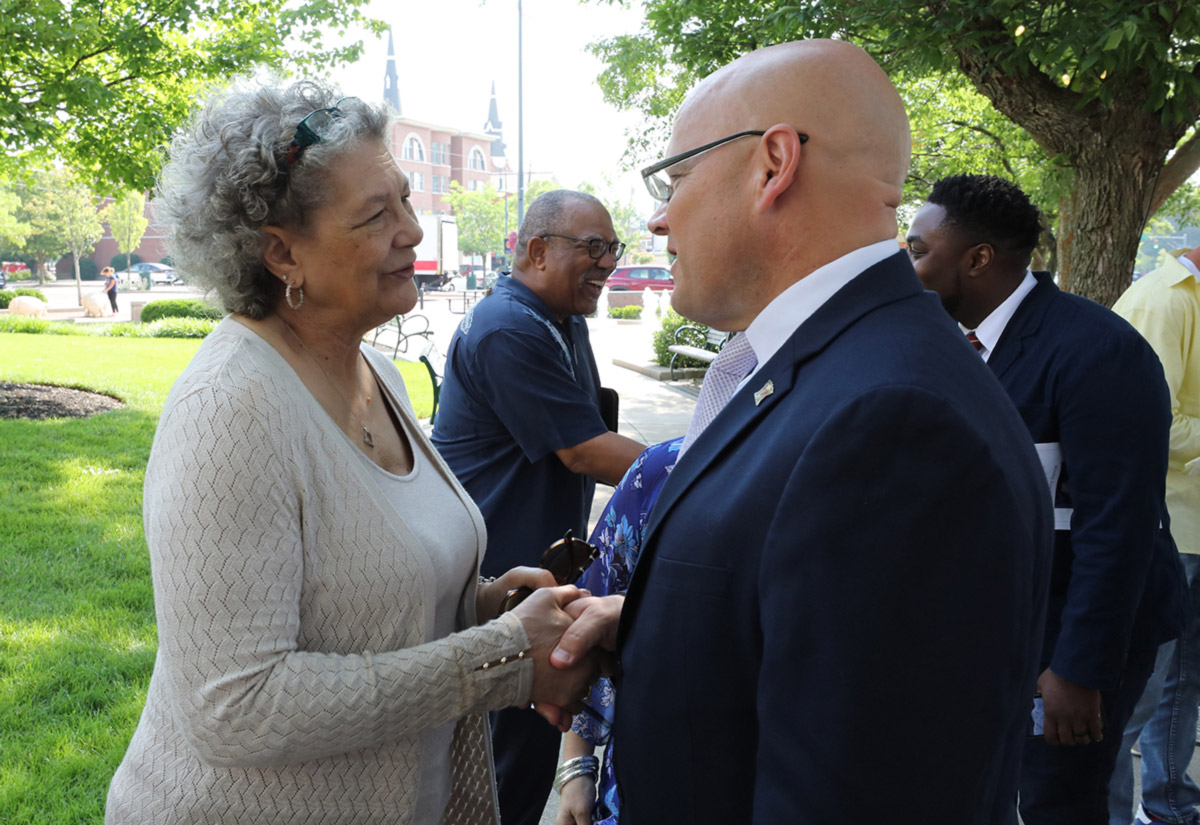
Chris Corbin-Jerreals and President Gregory Crawford clasp hands.
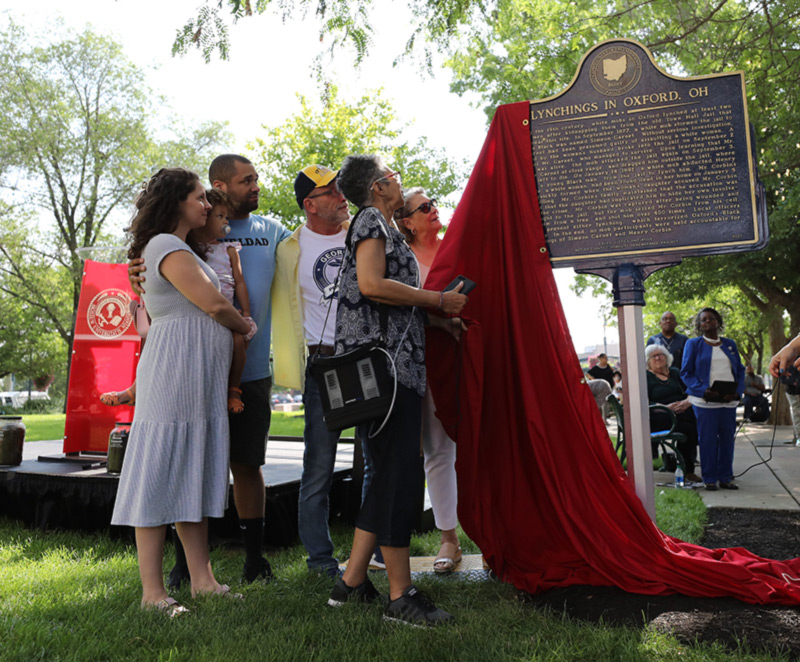
Family members of Mrs. Chris Corbin-Jerreals (two men, three women and one child) remove the red drape from the historical marker.
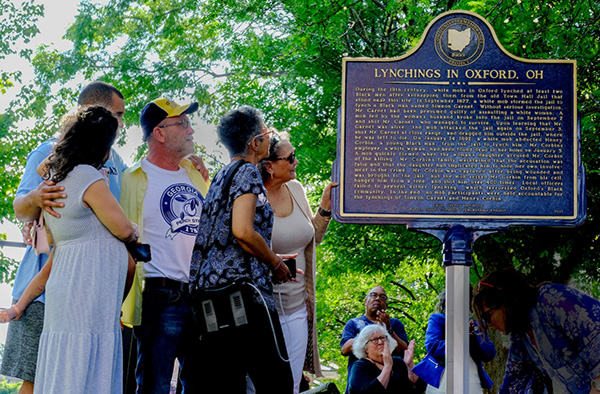
Family members of Mrs. Chris Corbin-Jerreals (two men, three women and one child) look at and touch the historical marker.
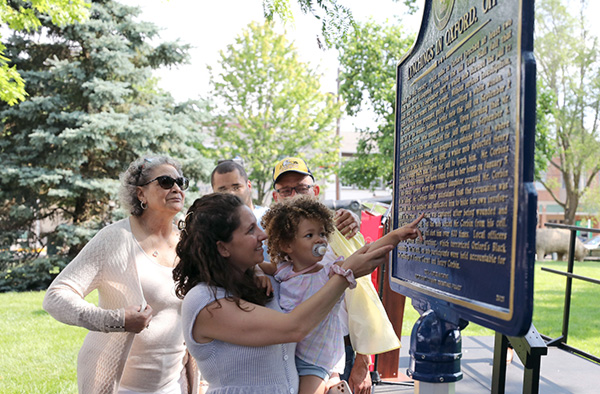
A woman holding her young child touches the marker with the Corbin-Jerreals family members by their side.
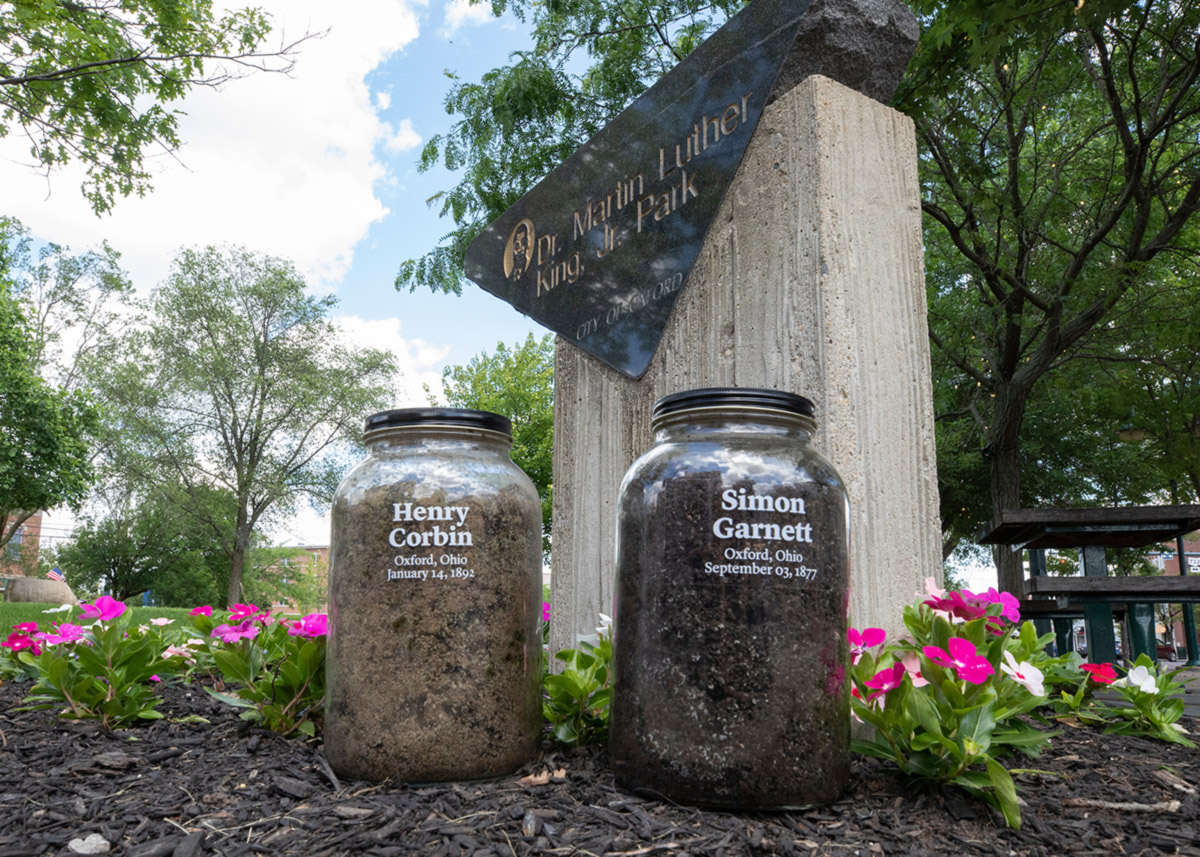
A close-up view of two jars of soil labeled “Henry Corbin, Oxford Ohio, January 14, 1892” and “Simon Garnett1, Oxford, Ohio, September 03, 1877” with pink flowers and the Dr. Martin Luther King Jr. park sign in the background.